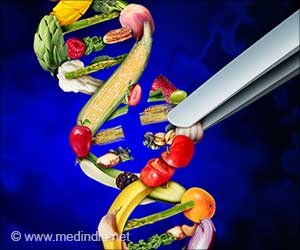Eating disorders aren’t just a disease of the young, they can significantly impact older women.
- Eating disorders don’t discriminate, they affect older women as well
- Factors like aging, societal obsession with youth and thinness, and hormonal changes can all contribute to eating disorders
- There is hope, treatment options like therapy and nutritional counseling can be helpful for those suffering from eating disorders
Eating Disorders in Older Women
Anorexia, bulimia nervosa, and binge-eating disorder (BED) collectively known as eating disorders (ED) are becoming surprisingly more common among older women in midlife. There are studies which can corroborate this fact. A 2012 study in the International Journal of Eating Disorders estimates that 13% of U.S. women aged 50+ have eating disorder symptoms, slightly more than the percentage diagnosed with breast cancer (1✔ ✔Trusted SourceBody Image, Aging, and Identity in Women Over 50: The Gender and Body Image (GABI) Study
Go to source). Research also shows although the rates of anorexia peak at about age 26, the rates of bulimia don’t become the highest until nearly age 47 and rates of BED don’t achieve the highest level of incidence until women are in their 70s (2✔ ✔Trusted Source
Age Effects in Eating Disorder Baseline Risk Factors and Prevention Intervention Effects
Go to source).
EDs have the highest mortality rates of any psychiatric illness, yet research points out only 27% of those afflicted seek professional help.
Another indicative ED affecting midlife women is atypical anorexia, where women restrict food intake for days. This ED type can drastically slow the body’s metabolic rate, which occurs to protect the body and ward off and ultimately defend it against starvation.
Reasons for Midlife Eating Disorders
Older women face stresses of varying degrees. This could be due to work or family issues. Another factor affecting EDs in women could be their ever changing hormones along with physical changes which comes with the natural progression of aging. Society also plays a huge role in the development of EDs because emphasis is placed on youth and vitality by constantly representing thinness and physical beauty.COVID-19 Led to Relapse of Eating Disorders
A recent survey also highlights the role that the pandemic played in eating disorders in older women. The participants of the study noted a marked increase in anxiety and reported greater concerns about the impact of COVID-19 on their mental health than physical health. Individuals with past histories of eating disorders noted concerns about relapse related to COVID-19 circumstances. Not all hope is lost as respondents also noted positive effects including greater connection with family, more time for self-care, and motivation to recover (3✔ ✔Trusted SourceEarly Impact of COVID-19 on Individuals with Eating Disorders: A survey of ~1000 Individuals in the United States and the Netherlands
Go to source).
Relapse of Eating Disorders in Older Age
Data suggests only about 5% to 10% of women who develop an eating issue are affected for the first time as adults, meaning ED has been a potential health issue for years or even decades in afflicted older women.Studies suggest most women with EDs were in treatment during adolescence, exhibited slight ED symptoms not medically addressed previously or had ED issues resurface after treatment during subsequent adult years. Many older women suffer from ED symptoms for years, suffering persistent illness and low body weight; off and on yo-yo dieting; compulsive eating, calorie counting and/or compulsive exercise behaviors; and nuanced, unnoticed intermittent ED behaviors they determine not to address with their healthcare professionals.
There are some eye-opening statistics concerning ED risks as they pertain to older women. On average a woman is most dissatisfied with her body at age 54. 79% of women age 50+ may feel body weight/shape plays a moderate to extreme role in self-perception (4✔ ✔Trusted Source
Eating disorder symptoms and weight and shape concerns in a large web-based convenience sample of women ages 50 and above: Results of the gender and body image (GABI) study
Go to source).
Factors Affecting Eating Disorders in Older Women
- With the increase of power and visibility in the workplace, the effects of aging are on full display. Appearing youthful and thin can seem critical to staying competitive on the job
- With the aging of their parents, they might need to move in with adult children or nursing homes
- The aging body undergoes metabolic changes, skin changes, and changes in fat distribution within a society idealizing youthfulness and thinness
- The societal expectation that older women should care for others before taking care of themselves
- The empty nest (when children leave the home) and the struggle to redefine identity; when no longer in the clearly defined role of “mother,” women may turn to health or appearance to initiate a new sense of identity and purpose
- The death of a parent and the struggle to manage grief, feelings of shock and new responsibilities
- Unexpected or chronic illnesses and changes in the body that can impair self and perceived body image
- Divorce or separation with their partners can affect mental health and cause a sense of loneliness
Eating Disorders Severely Affect Overall Health
Experts state a lifetime of ED issues, especially if left untreated, can have severe impact on both physical and mental health as well as longevity and quality of life.EDs affect the entire body from head to toe. Lack of proper nourishment lowers blood pressure, sometimes to dangerous levels, and estrogen, which can trigger bone loss, thus increasing risk of osteoporosis.
As the brain consumes up to one-fifth of the body’s calories, simple thinking processes and concentration can suffer. Purging can lower the body’s electrolytes, leading to heart arrhythmias and even heart failure.
Older women with eating disorders can even suffer from loss of muscle which can slow metabolic rate, digestive troubles like gastroesophageal reflux disease and irritable bowel syndrome, and heart arrhythmia.
If left untreated it can lead to nutritional deficiencies, diabetes, osteoporosis, kidney problems, gastrointestinal issues, and heart disease.
ED can also be fatal. One report found between 2008 and 2009, people aged 45+ accounted for 25% of overall ED hospitalizations (5✔ ✔Trusted Source
Statistical Brief #120 An Update on Hospitalizations for Eating Disorders, 1999 to 2009
Go to source).
How do I Know I have an Eating Disorder
EDs may go unnoticed within older female populations because its most obvious symptom of weight loss can indicate several health issues. In addition to weight loss, women may be embarrassed to discuss potential ED issues with their healthcare provider, therefore silencing their concerns.Other recognized symptoms of ED include: dramatic weight fluctuations, constant dieting, weight fixation and problems eating in front of others. It can also lead to mental health issues, such as depression or anxiety. These issues can magnify each other and contribute to isolation, which is another exacerbating factor contributing to ED affliction.
How can I Help Myself?
Many middle-aged and older women may be unsure about seeking help due to stigmas surrounding EDs occurring later in life. Recovery of an ED is always possible, especially in a treatment program addressing the specific needs and challenges uniquely faced by older women.Treatment usually involves:
- Nutrition education
- In-patient or outpatient treatment facility
- Psychotherapy
- Therapy with their significant other educates couples about the ED recovery process and teaches effective communication skills so they can be on the same page regarding goals and acceptance
Ultimately, therapy for EDs in older women strives to develop within those women afflicted with a deep sense of acceptance for the varying changes occurring to their body throughout their lifetime.
References:
- Body Image, Aging, and Identity in Women Over 50: The Gender and Body Image (GABI) Study - (https://www.ncbi.nlm.nih.gov/pmc/articles/PMC5215963/)
- Age Effects in Eating Disorder Baseline Risk Factors and Prevention Intervention Effects - (https://www.ncbi.nlm.nih.gov/pmc/articles/PMC5745064/)
- Early Impact of COVID-19 on Individuals with Eating Disorders: A survey of ~1000 Individuals in the United States and the Netherlands - (https://www.medrxiv.org/content/10.1101/2020.05.28.20116301v2)
- Eating disorder symptoms and weight and shape concerns in a large web-based convenience sample of women ages 50 and above: Results of the gender and body image (GABI) study - (https://onlinelibrary.wiley.com/doi/10.1002/eat.22030)
- Statistical Brief #120 An Update on Hospitalizations for Eating Disorders, 1999 to 2009 - (https://www.ncbi.nlm.nih.gov/books/NBK65135/)
Source-Medindia














